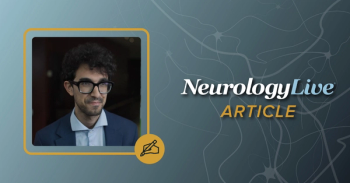
Orexin Agonist TAK-861 Shows Pronounced Effects in Phase 2b Trial of Narcolepsy Type 1
Across both the primary and secondary end points, treatment with TAK-861 resulted in significant improvements in symptom severity among patients with narcolepsy type 1.
At the 2024 SLEEP Annual Meeting, held June 1-5, in Houston, Texas, new data from a phase 2b trial (NCT05687903) showed that treatment with investigational TAK-861 (Takeda Pharmaceuticals) resulted in statistically significant and clinically meaningful improvements in primary and secondary end points among patients with narcolepsy type 1 (NT1). Based on these data, and in consultation with global health authorities, Takeda plans to initiate global phase 3 trials assessing the orexin receptor 2 (OX2R) agonist in NT1 in the first half of its fiscal year 2024.
The trial featured 112 patients who were randomized and treated with either placebo (n = 22) or TAK-861 dosing regimens of 0.5 mg/0.5 mg (n = 23), 2 mg/2 mg (n = 21), 2 mg/5 mg (n = 23), or 7 mg QD (n = 23). Over the 8-week treatment period, TAK-861 demonstrated statistically significant increased sleep latency on the Maintenance of Wakefulness Test (MWT), the primary end point, relative to placebo. Of note, all doses approached or were within the normative range, with the most pronounced effects observed in the TAK-861 2 mg/5 mg cohort.
All doses of TAK-861 significantly and clinically meaningfully improved subjective wakefulness as measured by Epworth Sleepiness Scale (ESS), a secondary end point. At week 8, the percentage of participants reaching the normative range of ESS less than 10 was 19.0% in placebo, 66.7% in the 0.5 mg/0.5 mg TAK-861 arm, 95.2% in the 2 mg/2 mg arm, 81.8% in the 2 mg/5 mg arm, and 73.9% in the 7 mg QD arm. All improvements were sustained over time.
Treatment with TAK-861 also resulted in significant effects on cataplexy, a common problem for patients with NT1. Over the 8-week period, median weekly cataplexy rate (WRC) was 4.1 in placebo vs 1.4 in the 0.5 mg/0.5 mg group, 0.7 in the 2 mg/2 mg group, 0.7 in the 2 mg/5 mg group, and 4.3 in the 7 mg QD group. In addition, some patients reported insomnia symptoms; however, the majority of these cases were mild or moderate and resolved within 5 days. There were no participants who discontinued because of adverse events (AEs), including insomnia, as well as no insomnia events that required medical intervention.
READ MORE:
"In this trial, TAK-861's profile balanced efficacy and safety with the potential to establish a new standard of care for people with NT1," Sarah Sheikh, MD, MSc, BCh, MRCP, head of Neuroscience Therapeutic Area Unit and head of Global Development at Takeda, said in a statement.1 "We are dedicated to investigating the full potential of orexin biology and advancing TAK-861 to late-stage clinical trials, with the ultimate goal of delivering a potential first-in-class treatment that can make a meaningful difference for patients."
Throughout the study, TAK-861 was shown to be generally safe, with the most common treatment-emergent adverse events (TEAEs) being insomnia, urinary urgency and frequency, and salivary hypersecretion. There were no cases of hepatotoxicity or visual disturbances reported during the double-blind period or ongoing long-term extension (LTE). Additionally, investigators found no treatment-related serious TEAEs or discontinuations because of TEAEs during the study.
An additional analysis assessed the effect of TAK-861 on measures of symptom severity in participants with NT1 using the Narcolepsy Severity Scale for Clinical Trials (NSS-CT). This validated, self-administered, 15-item scale comprises the severity, frequency, and impact of 5 narcolepsy symptoms (sleepiness, cataplexy, sleep paralysis, hallucinations, and disrupted nocturnal sleep. In comparison with placebo, TAK-861 resulted in clinically meaningful changes in NSS-CT across all dose groups (0.5 mg/0.5 mg: least square [LQ] mean difference at week 8, –14.74 [95% CI, –19.73 to –9.74]; P <.001; 2 mg/2 mg: LS mean difference, –17.53 [95% CI, –22.60 to –12.47]; P <.001; 2 mg/ 5 mg: LS mean difference, –17.64 [95% CI, –22.62 to –12.66]; P <.001; and 7 mg QD: LS mean difference, –13.73 [95% CI, –18.65 to –8.81; P <.001).3
Through TAK-861 treatment, the majority of patients reported mild disease on NSS-CT. In addition, most treated participants reported “much” or “very much” improved on Clinical Global Impression-Severity scale, as well as Patient Global Impression-Severity scale. Overall, in addition to these physician and participant-reported measures, TAK-861 showed an ability to address aspects of disease burden important to patients with NT1.
REFERENCES
1. Takeda’s TAK-861 phase 2b late-breaking data presentations at SLEEP 2024 demonstrate clinically meaningful impact of oral orexin agonist in narcolepsy type 1 compared to placebo. News release. June 3, 2024. Accessed June 14, 2024. https://www.takeda.com/newsroom/newsreleases/2024/tak-861-data-at-sleep-2024-on-narcolepsy-type-1/
2. Dauvilliers Y. Efficacy and safety of TAK-861, an oral orexin receptor 2 agonist, in individuals with narcolepsy type 1: results from a phase 2 study. Presented at: 2024 SLEEP Annual Meeting; June 1-5; Houston, TX. ABSTRACT LBA1318
3. Barateau L. Effect of oral orexin receptor 2 agonist TAK-861 on the severity of symptoms in individuals with narcolepsy type 1: results from a phase 2 study. Presented at: 2024 SLEEP Annual Meeting; June 1-5; Houston, TX. ABSTRACT LB1317
Newsletter
Keep your finger on the pulse of neurology—subscribe to NeurologyLive for expert interviews, new data, and breakthrough treatment updates.



























